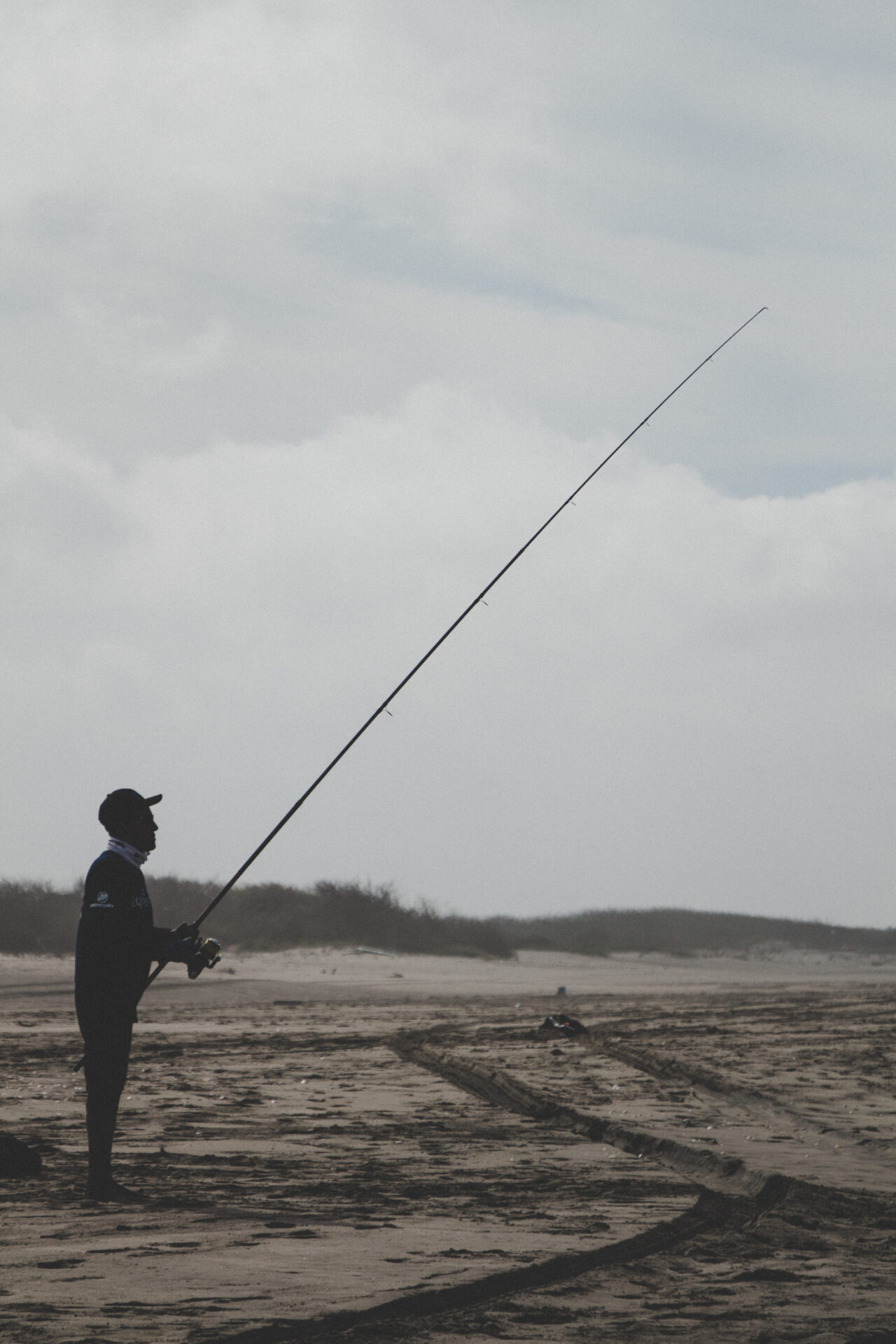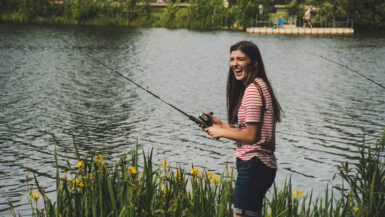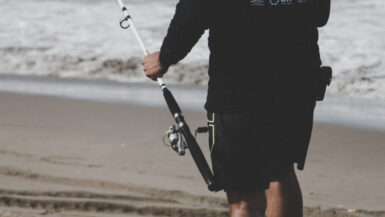Fishing can be a fun, relaxing way to spend a day outdoors and enjoy the beauty of nature. But to be a truly successful angler, it takes more than a good luck. Knowing the science behind fishing can give you the edge you need to find fish and land the big one. Reading the surface of the water and understanding the environment around it can be a great way to find and catch fish in freshwater. In this article, we’ll look at the science of fishing and how to use it to find fish in freshwater.
Basics of Freshwater Fishing: What to Look For
When trying to find fish in freshwater areas, understanding the conditions that draw and guide fish to these environments is key to successful fishing. Different species of freshwater fish have different preferences when it comes to water temperature, oxygen content, current, and the type of terrain they inhabit. If you are looking to land a big catch, you need to know the types of conditions that the fish you are looking for are attracted to.
Identifying Fish in Freshwater: Where to Look
In order to catch a fish, you need to go to where they are located. In freshwater areas, fish can be found in many different places. Pay attention to the shorelines and riverbanks, as many species of fish like to swim near these areas. Other spots to look for fish in freshwater include murky waters, weed beds, and even near underwater ledges. Knowing where to look for fish is essential for your fishing success.
When to Fish in Freshwater: Timing is Everything
When it comes to freshwater fishing, timing can make or break your success. Different species of fish have different feeding times. For example, some fish such as bass may be more active in the early morning hours, while others such as crappie may be more active in the evening. Knowing when to fish in freshwater will help increase your chances of landing your desired catch.
Read the Water: Understanding Current and Tides
When looking for fish in freshwater, understanding the current and tides of the water can be beneficial. Pay attention to the water’s surface movements and determine if the current is bringing food sources to any particular area. Fish may be drawn to areas in the water where food is more abundant. Additionally, pay attention to the tides, as certain species of fish may be drawn to different tides.
Read the Terrain: Identifying Structure, Seam, and Debris
In addition to reading the current and tides of the water, paying attention to the terrain is also important. Identify areas with structure such as fallen trees, sunken logs, or rocks, as these areas can serve as a hideout for fish. Fish may also be attracted to seams in the water- the boundary between two different currents- as food sources may be more prevalent in these areas. Additionally, look for debris such as leaves and sticks as they can attract fish to the area. Understand the terrain of the freshwater area and you may find yourself with a successful fishing trip.
Freshwater Fishing Techniques and Gear
Certain techniques and gear used in freshwater fishing can help increase your chances of landing a big catch. Different species of fish may require different types of bait, lures, and techniques in order to be caught. Depending on the type of fish you are looking for, you may need to use different techniques and gear such as jigs, spinners, crankbaits, or even fly fishing. Know which techniques and gear to use in order to catch the fish you are looking for.
The Effects of Weather on Fishing Spots
Weather conditions play an important role in determining which fishing spots will be productive for anglers. From the temperature of the water to the winds that blow across a lake or river, different weather patterns can have a significant impact on where and when the best catches can be made. Understanding the impact of weather on fishing spots can have a big influence on the success that anglers have when they go out on the water.
Understanding the Impact of Temperature
Temperature is one of the most important factors in determining how productive a fishing spot is going to be. During cold weather, fishermen and -women should focus on deeper water, where the temperature is more consistent and where fish are going to be more comfortable. When the weather is warmer, the fish are likely to be more active and can be caught in shallower waters. Knowing the temperature and choosing the right spot based on the time of year is key to successful fishing.
Evaluating the Effects of Wind
Wind has a major impact on the way water moves and how fish behave, meaning it should be taken into account when picking out a fishing spot. If the wind is blowing strongly, it is likely to push the fish away from the shore, into deeper water. If the wind is blowing in the opposite direction, however, it can cause the fish to be pushed up against the shore, making them easier targets. Pay attention to the wind when scouting out a fishing spot and you are more likely to find success.
The Power of the Sun
The angle at which the sun hits the water can also have a big influence on the productivity of a fishing spot. The intensity of the sunlight during different parts of the day can cause the fish to move to different depths or different areas of the water. Knowing the patterns of the sun helps to identify the best spots for catching fish.
Factoring in Precipitation
Finally, it is also important to take precipitation into account when scouting out a good fishing spot. Rain can cause the water level to rise, which in turn can push the fish into a different part of the lake or river. It can also create a murkier water environment, making it more difficult to see the fish. Understanding when the rain is likely to fall can help to anticipate the movement of fish, giving you the edge when it comes to catching them.
Weather plays a key role when it comes to finding the best fishing spots in freshwater. Knowing how temperature, wind, sun, and precipitation can affect where fish will be and how active they are is essential for successful fishing. Armed with an understanding of the science of fishing and how different weather patterns can impact a spot, anglers will be able to maximize their success when out on the water.
Finding the Right Casting Spot
Fishing is not just about luck – the science of it requires knowing the right spots and how to read the water in order to find the fish. It takes practice to truly understand the topography and structure of the lake or river and to recognize the depths and water’s flow. This can be done with the help of a depth finder or sonar, but it can also be done by simply walking the shoreline or observing the water conditions.
Reading the Water
To be successful when fishing in freshwater, it’s important to know how to read the water. Different types of landscape can indicate different fish habitats. A shallow shoreline is typically going to be a great place to look for bass, while a deeper area near the shore is usually a great spot for salmon. The type of vegetation and water clarity can also help to pinpoint the perfect fishing spot. Low vegetation, for example, indicates a good spot for bass fishing, while weeds can be a great habitat for trout.
Analyzing the Weather
Weather plays a role when fishing for freshwater fish, as sudden changes can affect their location. Strong winds can push a school of fish away from a specific spot, while a storm might cause them to retreat to a certain area. The direction and speed of the wind can affect your casting technique and thus the success of your fishing.
Choosing the Right Lure
Lure types and color also play a role when it comes to fishing in freshwater. Different depths, types of water, and climates can require different kinds of lures. As a general rule, lighter bait or lures should be used in shallow water and darker lures or bait should be used in deeper waters.
Making the Right Cast
Once you have identified the optimal fishing spot, it is important to cast in the correct spot to ensure a successful catch. It’s important to cast the lure at different angles, depths and positions to find out where the fish are located and what types of lure, technique or presentation they prefer.
Fishing Tips for Freshwater
Fishing in freshwater requires knowledge and skill. To find the best spots and get the most out of your fishing trips, consider the following tips:
- Use a depth finder or sonar to identify the right spots.
- Choose the right type of lure or bait for the given water conditions.
- Observe the weather and recognize how it affects the water.
- Make sure to cast at different angles and depths.
- Stay patient and focused.
- Be aware of the regulations in your area.
Fishing in freshwater requires an understanding of the environment and a bit of practice to get the hang of it. With the right knowledge, you can easily and quickly find the perfect spot and angle to land a successful catch.
Strategies for Identifying Fish Location
Before you can begin to effectively target fish, you need to know what type of fish live in the area you are fishing. Research the types of fish that inhabit your local waters and get to know the characteristics of each species. This knowledge can help you better strategize where to search for them.
Inspect the Local Environment
Once you know the type of fish you are targeting, you can then narrow down the areas to look for fish. Take the time to inspect your surroundings for clues about where to cast your line. Look for physical structures such as logs, rocks, and drop-offs that create ideal habitats for different fish species. Pay attention to the water’s depth and current, since these factors can also give clues as to what type of bait might be attractive to the fish.
Pay Attention to Fish Behavior
Once you have identified potential areas to focus your search, use your senses to search for fish. Look for signs of activity on the surface such as splashing and mud-slurping. Listen for the tell-tale sign of fish slapping the water. Pay attention to other wildlife in the area, as they can offer clues as to the presence of fish.
Use Technology To Locate Fish
Technology can also be a great tool for finding fish. There are a variety of fish-finding gadgets that can be used to help locate and track fish. Many of these devices use sonar to detect movement and help you to determine the size and type of fish present in a particular area.
Learn From Other Fishers
Another great way to find fish is to talk to other anglers. Learn from those with local experience about the best areas to fish and the type of bait and lures that are the most successful. Even if an area has been fished heavily, there are still plenty of fish to be found if you know where to look.
Try Different Fishing Tactics
Finally, be willing to try different techniques to locate and catch fish. Adjust your bait and lures, fishing location, and time of day to find the best strategy for your particular situation. Experiment with various techniques to gain a better understanding of what works in different areas so that you can catch more fish.
Using Technology for Improved Fishing Success
Many anglers are embracing modern technology to help improve their fishing success. This involves utilizing fish-finding technologies such as sonar devices, underwater cameras, and fish-tracking systems.
Fishing Sonar Technology
One of the most popular ways to use technology to improve fishing success is through fish-finding sonar technology. This type of technology works by sending sound waves through the water to create an image of the underwater environment. The image is displayed on a screen with various colors and lines representing different objects. Fish show up as arches or blips on the screen that assist anglers in locating what depth and type of fish is in the water.
Underwater Cameras
Another modern fishing technology that is gaining in popularity is the use of underwater cameras. These cameras allow anglers to see what is happening underneath the water’s surface. The fish movements and location can be monitored and anglers can see where they should be casting or setting their lines.
GPS Fish Trackers
GPS fish-tracking systems are also used to help anglers improve their fishing success. These systems work by sending out a signal that is tracked via GPS satellites. The recorded information is then transferred to a mobile device or computer for analysis. This technology can help anglers understand the behavior of the fish, allowing them to target them in the most efficient way.
Overall, modern technology is being embraced by fishermen to improve their fishing success. Utilizing fish-finding sonar technology, underwater cameras, and GPS fish-tracking systems can all help anglers gain a better understanding of the aquatic environment and give them an edge in their pursuit of the perfect catch.
Declaring Victory in the World of Fishing
Most anglers know that a well-crafted fishing trip begins and ends with the science of reading water and understanding where the fish are. By equipping themselves with an understanding of the underwater terrain, anglers can have the confidence to find fish in any freshwater environment. The key is to recognize factors like current, topography, and the forage of the local fish, which help anglers understand how the fish will act in a certain environment. With the right knowledge, anglers can set off on the right foot and be successful in their freshwater fishing adventure.
Whether you’re a novice angler or an experienced pro, understanding the science of fishing is a great way to ensure you catch more fish on your next excursion. With the knowledge and understanding that reading water can as provide, anglers can increase their chances of having a successful and rewarding fishing trip. And with that kind of success, you can declare victory over the world of freshwater fishing!





Leave a reply